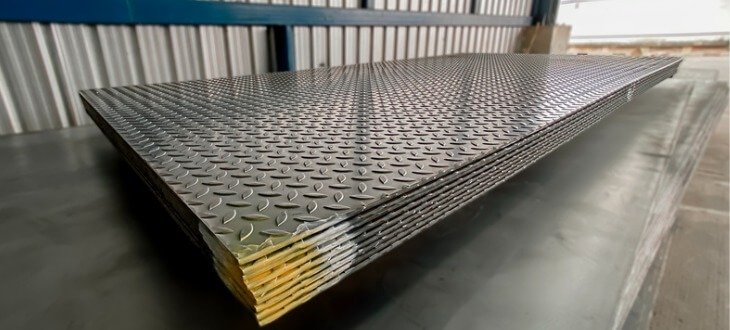Workplace safety is constantly a concern in manufacturing plants, warehouses, and heavy-duty facilities. Materials used in these environments must provide durability, strength, and reliability while helping reduce accidents. One material gaining steady attention is aluminum diamond plate, a textured metal surface combining function and safety benefits. Compared with smooth flooring or traditional steel, it provides a distinctive advantage. This is why even businesses consulting an aluminum diamond plate supplier often explore how this material fits into their safety strategy.
Traction and Slip Resistance
The standout feature of the aluminum diamond plate is its raised diamond pattern. These raised ridges create friction between footwear and the surface, significantly lowering the chances of slips. This grip becomes essential in facilities where oil, water, or dust are common. Smooth concrete may look strong, but once moisture hits, hazards multiply. The texture of diamond plate mitigates that risk, making it a practical choice in high-traffic pathways and ramps.
Durability Without Excess Weight
Another advantage lies in the balance between strength and weight. Steel offers raw toughness, but its weight makes it harder to install and more costly to transport. Aluminum diamond plate provides robust durability while remaining light enough to handle easily. This feature simplifies installation, reduces structural stress, and supports long-term performance without frequent replacement. Facilities looking for efficiency often weigh the choice between bulkier steel options and lighter aluminum, and aluminum frequently wins for flooring and wall applications.
Corrosion Resistance and Maintenance
Aluminum is naturally corrosion-resistant, unlike untreated steel, which requires protective coatings to prevent rust. This corrosion resistance in humid or chemical-heavy environments translates to lower maintenance costs and longer-lasting surfaces. For industries aiming to minimize downtime, the reduced need for upkeep makes aluminum diamond plate a compelling investment. It can withstand exposure to moisture, temperature shifts, and cleaning solutions without compromising safety or aesthetics.
Versatility in Application
Safety does not stop with floors. Aluminum diamond plate is often used on stairs, loading docks, truck beds, and even for wall protection. Each application shares one priority: minimizing accidents while maintaining structural reliability. For example, steps covered in diamond plate resist wear and improve worker stability, especially in outdoor or transitional areas. This versatility allows businesses to apply one material across multiple problem zones.
Cost and Long-Term Value
Although an aluminum diamond plate may cost more upfront than basic flooring, the long term value comes from reduced accident claims, fewer replacements, and lower maintenance. When calculating overall safety ROI, businesses often realize that preventing one major accident pays for the investment many times over. Like selecting an aluminum diamond plate supplier to ensure quality and reliability, choosing this material is a decision rooted in balancing cost and risk reduction.
A Subtle Contribution to Safety Culture
Beyond the material itself, installing aluminum diamond plate signals a commitment to workplace safety. Workers notice when floors and steps are designed with their protection in mind. This subtle reinforcement contributes to a broader safety culture, encouraging employees to respect and maintain high standards in their daily tasks.
Aluminum diamond plate may not always be the first material that comes to mind for industrial spaces, but its role in enhancing safety is undeniable. Its slip-resistant texture, lightweight durability, corrosion resistance, and adaptability across environments offer a comprehensive solution. High-traffic industrial spaces demand more than toughness; they require materials that actively reduce hazards. Aluminum diamond plate delivers on that promise, making it not just a functional choice, but a safer one.








